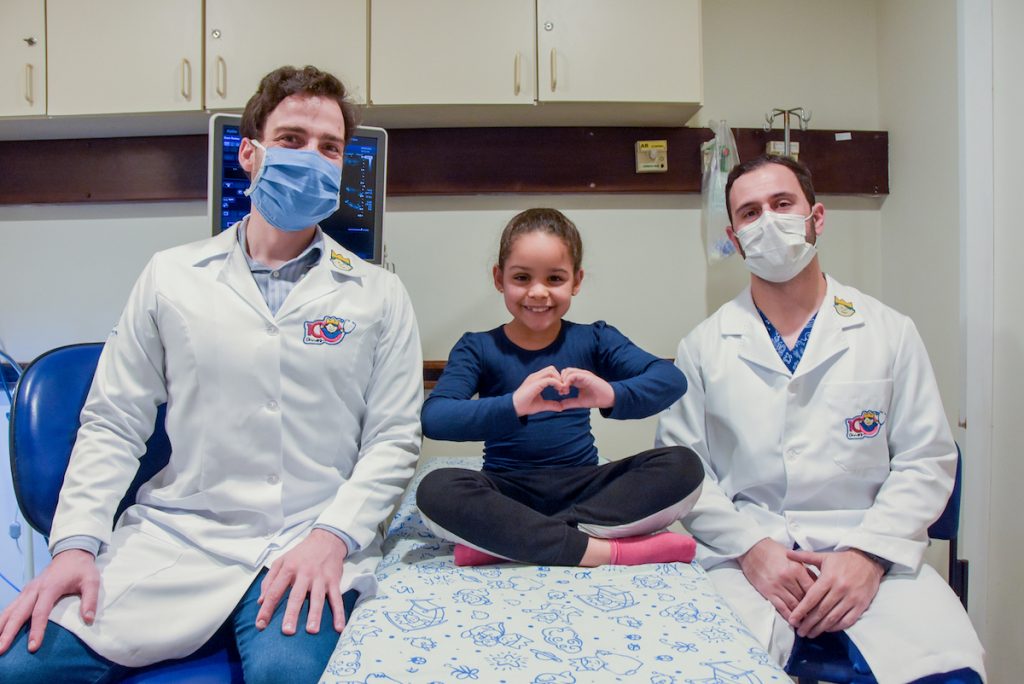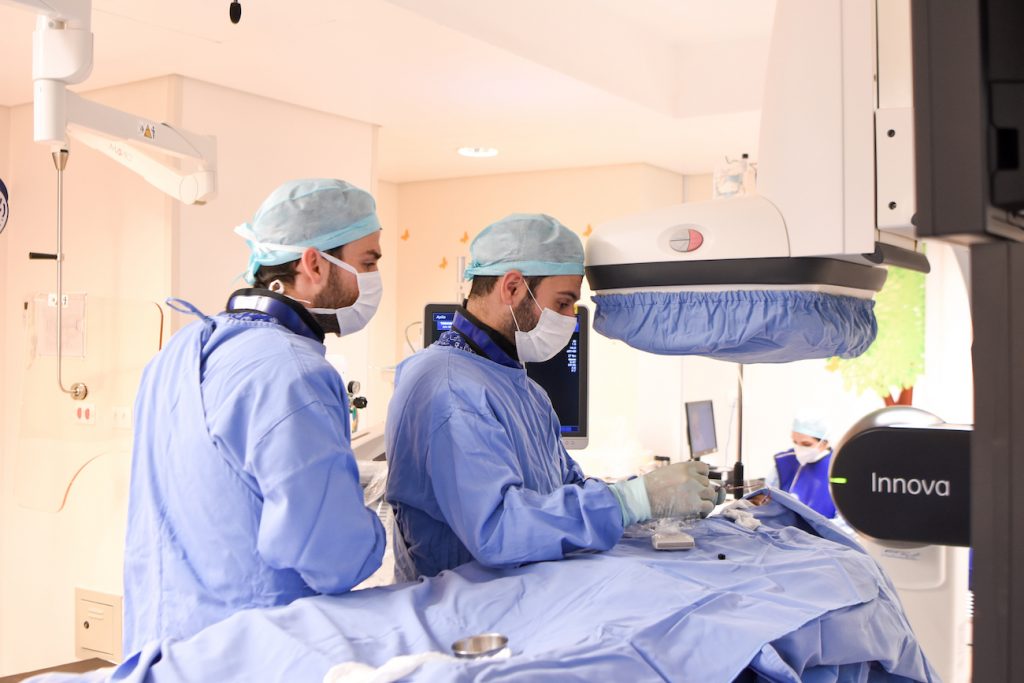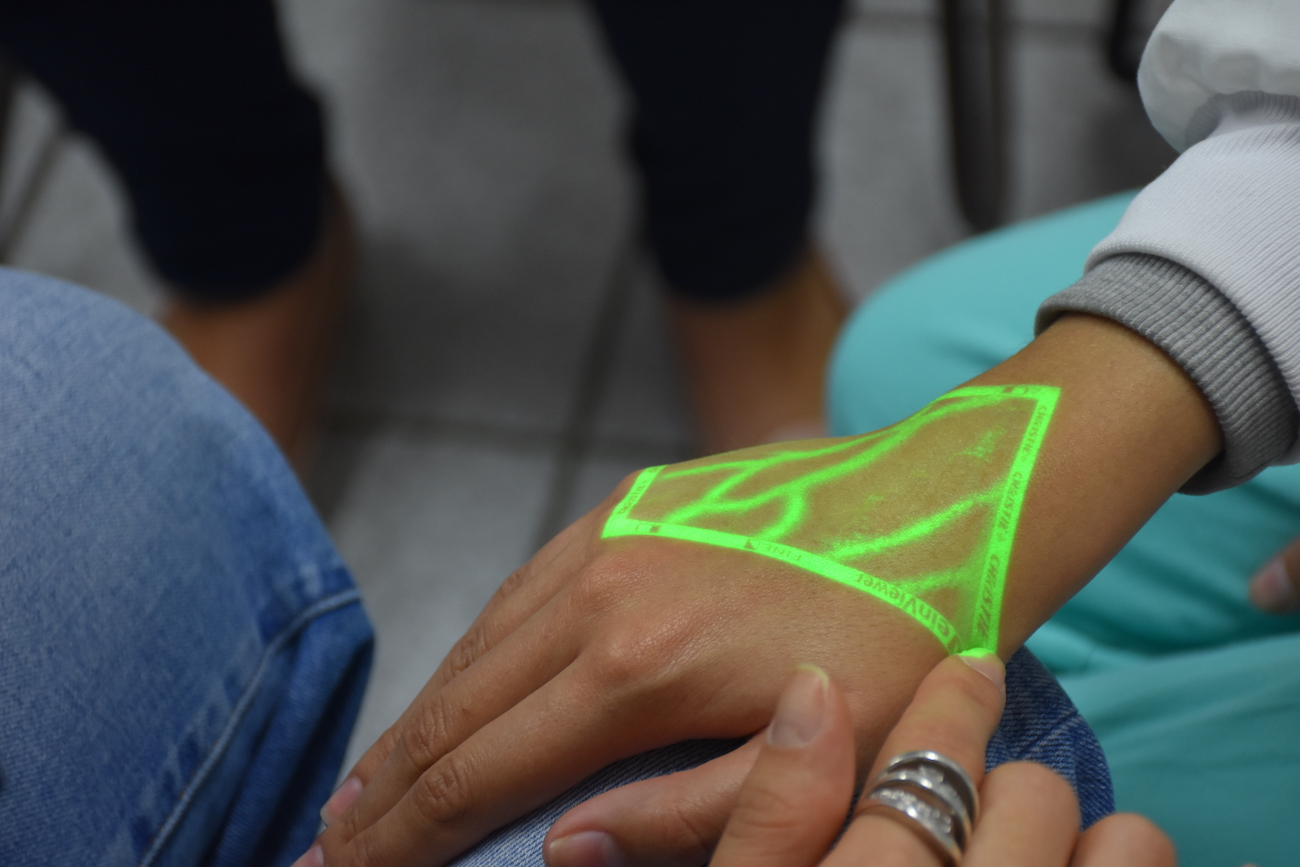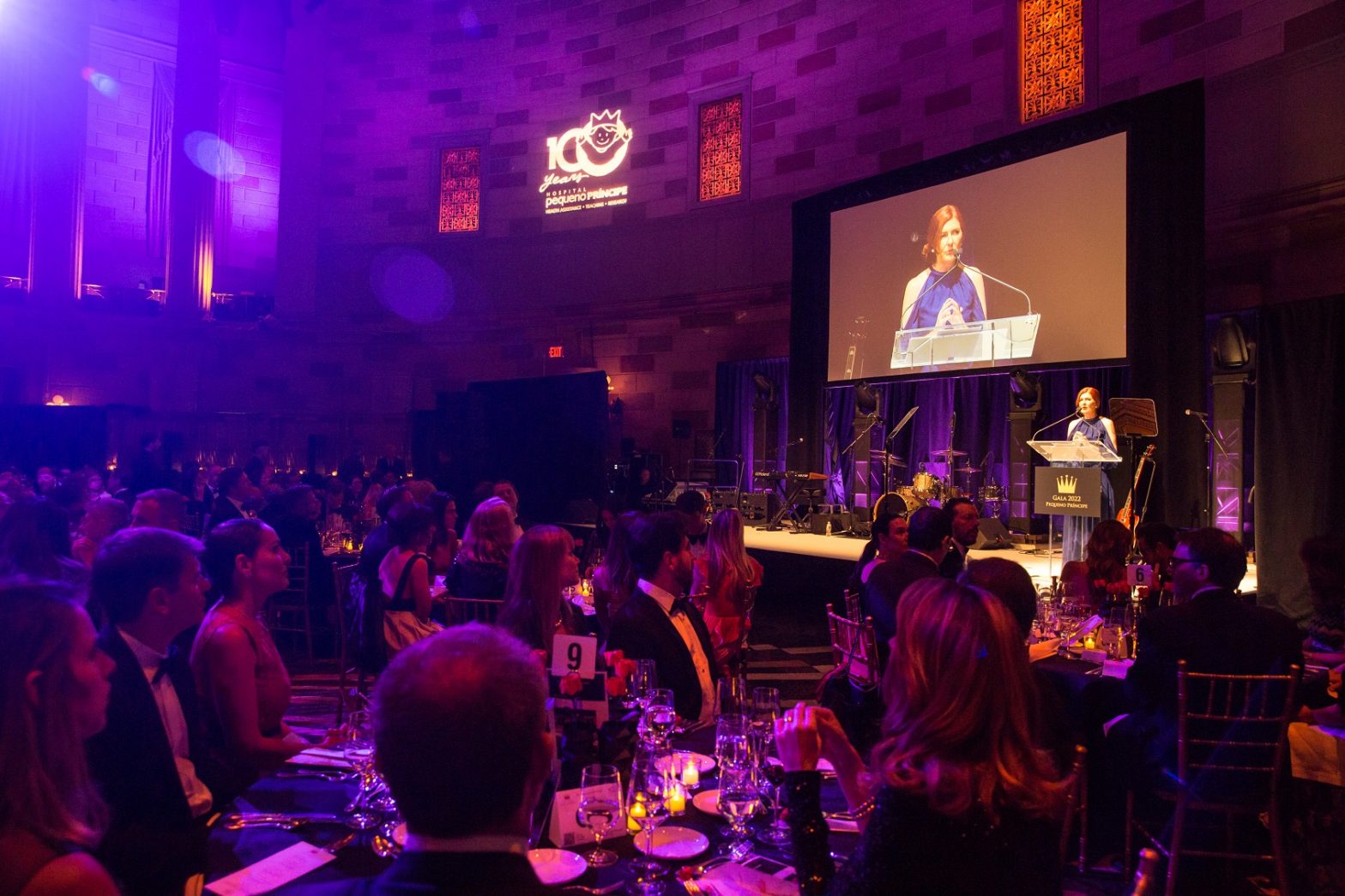Pequeno Príncipe Interventional Radiology performs unprecedented surgery in Brazil
The minimally invasive procedure restored a 7-year-old patient’s eye, preventing her from losing her sight
An unprecedented surgery in Brazil, performed at Pequeno Príncipe Hospital, gave little Yasmin Garcia, 7 years old, the chance to continue seeing. Yasmin has lymphangioma, a rare disease marked by the abnormal formation of lymphatic vessels (and also blood vessels), which cluster in a certain region and can dilate, cause swelling and promote fluid accumulation. The disease usually develops in the head and neck region. But in her case, the lymphangioma has developed behind the eye, pushing the eyeball forward.

“We tried to control the swelling at home and took her to two ophthalmologists, but no one knew what was happening to her. The eye started to be very protruding, it was pressed out of the skull. She was also in pain, she couldn’t eat and was vomiting all the time,” says grandmother Cleci Haerter.
A resident of Cascavel, in the state of Paraná inland, the family sought help in Pequeno Príncipe (500 km away from their hometown). Upon arriving at the Hospital, the girl’s eye was so protruding that her eyelids would no longer close. The swelling also compromised the optic nerve, responsible for transmitting light and visual elements from the eye to the brain, where such information is interpreted. In other words, Yasmin’s ability to see was at risk.
Quite complex, Yasmin’s case could be treated by oncologists, neurologists, ophthalmologists or surgeons. With 35 medical specialties, Pequeno Príncipe has professionals from all these areas. The solution was to bring together a multi-professional group and add to this team the institution’s new service: interventional radiology, that uses radiography equipment to analyze body parts in real time during a procedure, helping both to perform more accurate diagnoses as in minimally invasive treatments.
Doctors Pedro Santini and Helder Groenwold Campos were responsible for the procedure. They inserted a needle in the region between the upper base of the nose and the injured eye, and relied on a machine that makes x-rays in real time to follow the intervention. The fluid that had accumulated in the eye was drained, and then the doctors applied a chemotherapy drug that destroys only the defective cells that make up the lymphangioma.

Within hours of the procedure, Yasmin’s appearance was practically normal, with her eye in place. The girl’s vision was preserved, and now she is been followed up at the institution. “We had a reduction of more than 75% and, after a month of follow-up, we did not have the formation of a significant amount of liquid again,” points out Campos.
Pediatric interventional radiology
Pediatric interventional radiology is a relatively new area of medicine. In Pequeno Príncipe, the service was implemented at the end of 2019. There are around 300 pediatric interventional radiologists worldwide and only 16 services that train these professionals. In Brazil, only three physicians act in the pediatric area.
The great advantage of the specialty is to perform minimally invasive interventions. As the procedures are done with the introduction of small needles, the patient leaves without major scars. This speeds up the recovery process, reduces pain, reduces the risk of complications and also reduces the cost of hospitalization.
More
With a falling budget, investing in research in Brazil is a challenge
In 2021, Pequeno Príncipe allocated 4.6% of its revenue to research because it believes that science is the way to advance knowledge
After two years, Pequeno Príncipe Gala is held in person once again
Held on October 14th in New York, the 12th edition of the event brought together 260 supporters of the institution, raised a total of US$ 876,950.00, and was marked by the emotion of the reunions









